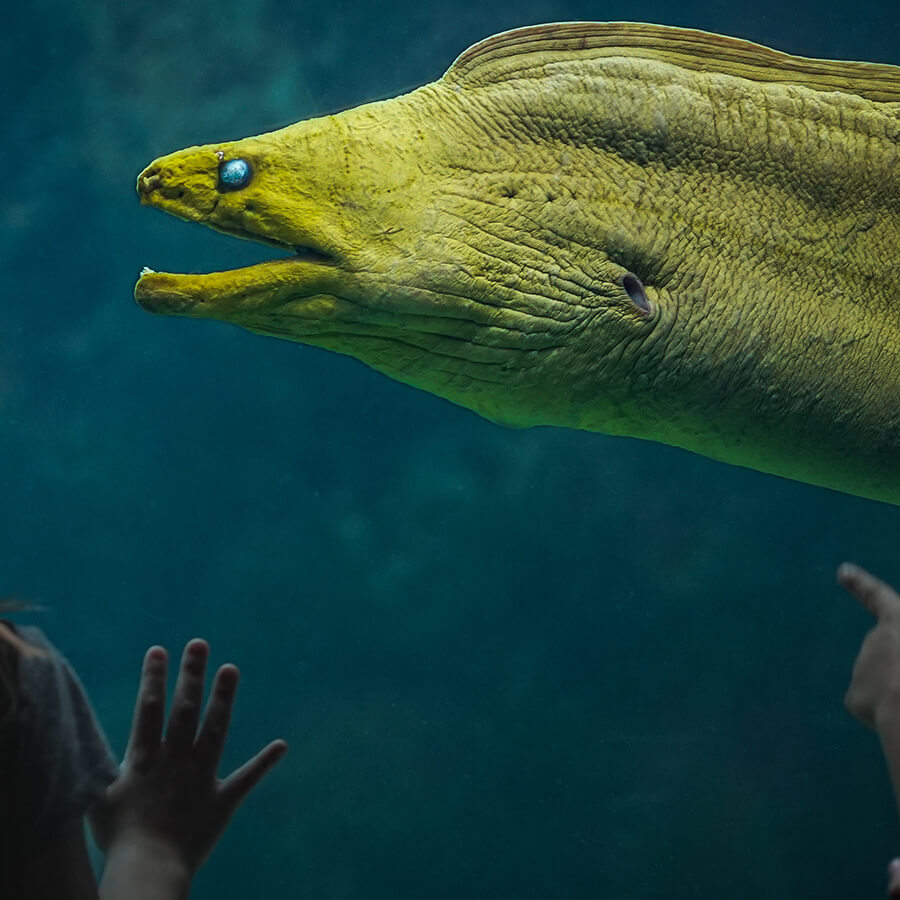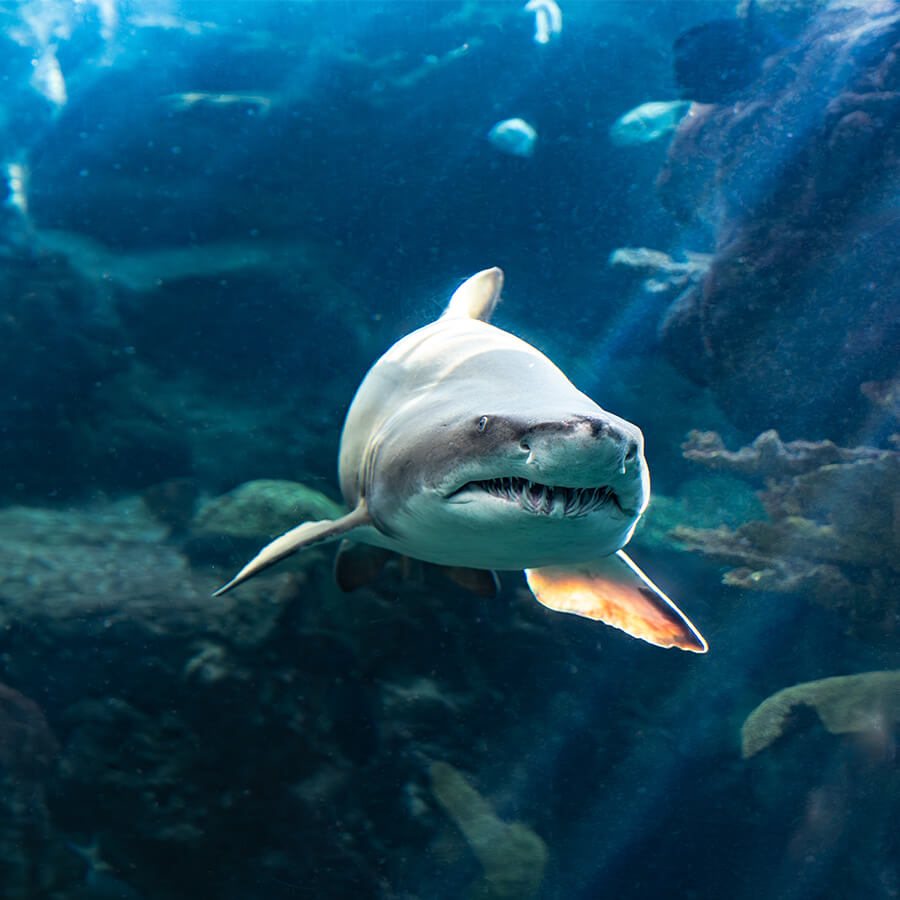
Animal Spotlight
Southern Stingray
Hypanus americanus
Gentle Giants. Graceful Gliders.
Southern stingrays are typically docile creatures that spend most of their time buried in the seafloor. When threatened, they can raise their tails like a scorpion to stab predators with their venomous barbs, located near the base of their tail, though they are more likely to swim away. They get oxygen to their gills through small openings, or spiracles, located behind their eyes.
Special sensors, or electroreceptors, on their snouts help them find food. To uncover prey, they move mud or sand away with their noses or flexible fins. Southern stingrays have symbiotic relationships with cleaner fish, which eat parasites off their bodies.
Meet the Neighbors
Often seen gliding gracefully in our floor-to-ceiling panoramic window, these gentle giants share their habitat with an array of species including sand tiger sharks and moray eels.

Moray Eel
From a color misconception to a tough reputation, there’s a lot to unlearn about this reclusive species.

Sand Tiger Shark
With large, bulky bodies, sharp teeth, and long snouts, sand tiger sharks possess a variety of unique features.
Ready to Visit?
Gaze up at giant southern stingrays, sand tiger sharks, sea turtles, and more in our largest habitat, the Coral Reefs.
